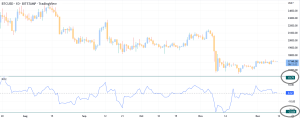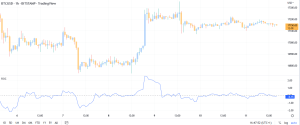Why Higher Time Frames Are So Much Better Than Lower Ones

In trading, the daily and weekly time frames are considered to be the best for a number of reasons. These time frames provide a good balance between short-term and long-term perspectives, and offer a number of benefits that can help traders to make informed and profitable decisions.
One of the main reasons why the daily and weekly time frames are the best in trading is because they provide a more comprehensive view of the market. While shorter time frames, such as the one-minute or five-minute time frames, can be useful for identifying short-term opportunities, they often lack the broader context and perspective that is necessary to make informed decisions. By contrast, the daily and weekly time frames provide a more complete picture of the market, and can help traders to see the bigger picture and understand how their trades fit into the overall market environment.
Higher Time Frames Are More Predictable, And Move More
Another reason why the daily and weekly time frames are the best in trading is because they tend to be less volatile and more predictable than shorter time frames. Shorter time frames are often characterized by high levels of volatility and uncertainty, which can make it difficult for traders to properly assess the risks and potential rewards of a given trade. By contrast, the daily and weekly time frames tend to be more stable and predictable, which can help traders to better manage their risks and make more informed decisions. As a general rule, how would one trade smaller time frames profitably, if he can’t profit from the daily or weekly, while it is so much less hard?
On top of the volatility differences, and on top of the increased strategic confidence, the movement on for example the daily compared to the hourly, is much bigger.
Below, we compare the rate of change for the daily time frame, versus the hourly, showing that the daily has much more potential for profit.
Additionally, the daily and weekly time frames are the best in trading because they offer more opportunities for traders to enter and exit positions. Shorter time frames tend to be more limited in terms of the number of opportunities that are available, and can often be dominated by short-term noise. By contrast, the daily and weekly time frames offer more opportunities for traders to enter and exit positions, and can provide a more balanced and reliable view of the market.
Higher Time Frames Are More Long-Term Oriented
Furthermore, the daily and weekly time frames are the best in trading because they are more suited to long-term strategies and goals. Many traders are looking to achieve long-term success in the market, and the daily and weekly time frames provide a more suitable framework for achieving these goals. By contrast, shorter time frames are often more suited to short-term or day trading strategies, which may not be as effective for achieving long-term goals.
Finally, the daily and weekly time frames are the best in trading because they are more conducive to technical analysis. Technical analysis is a widely used method of analyzing the market and identifying trading opportunities, and it relies on the use of historical data and price charts to identify trends and patterns. The daily and weekly time frames provide more data points and a longer historical perspective, which can be more useful for technical analysis than shorter time frames.
In summary, the daily and weekly time frames are the best in trading for a number of reasons. These time frames provide a more comprehensive view of the market, are less volatile and more predictable, offer more opportunities for traders to enter and exit positions, are more suited to long-term strategies and goals, and are more conducive to technical analysis. Overall, the daily and weekly time frames are an essential tool for traders who are looking to achieve success in the market.


